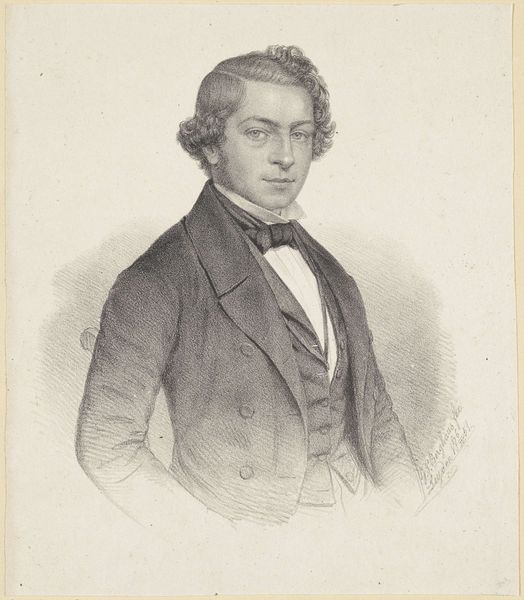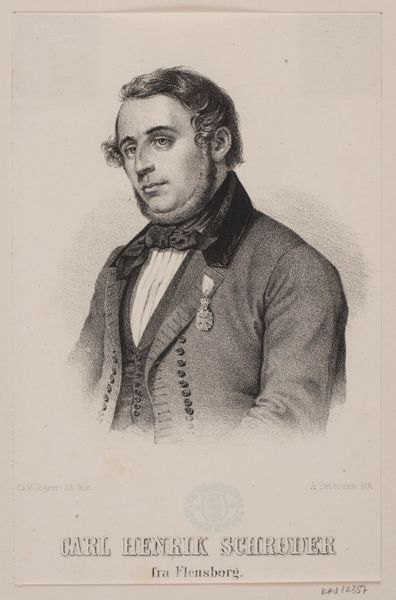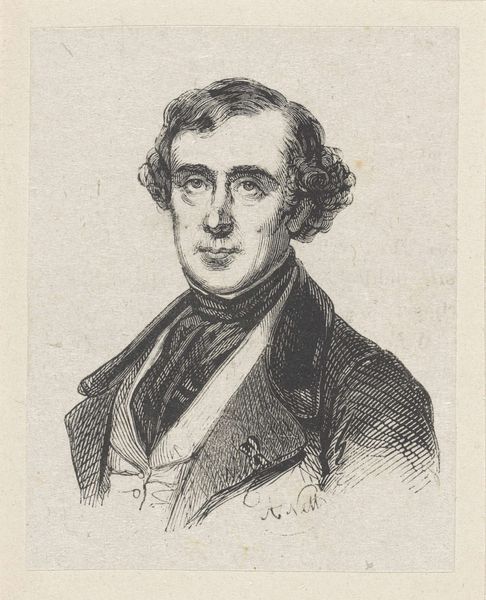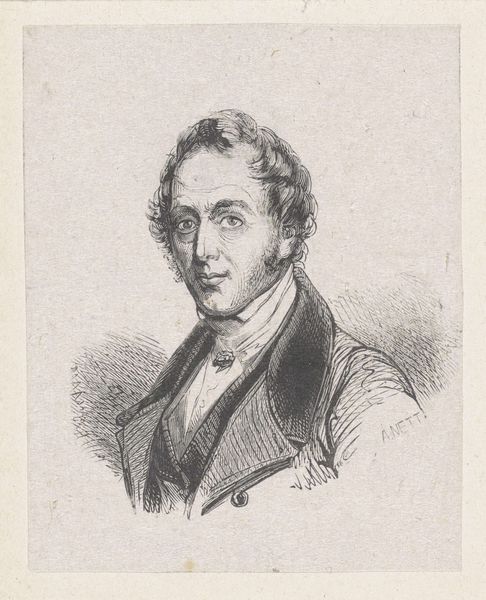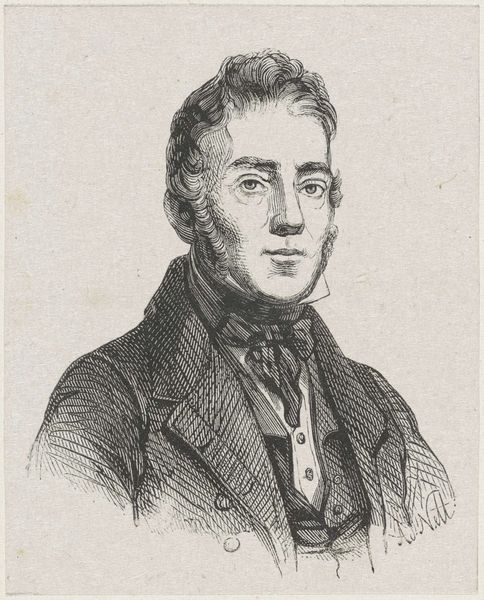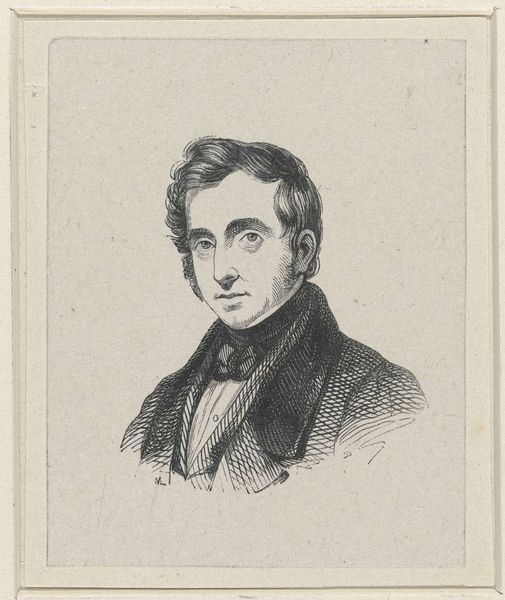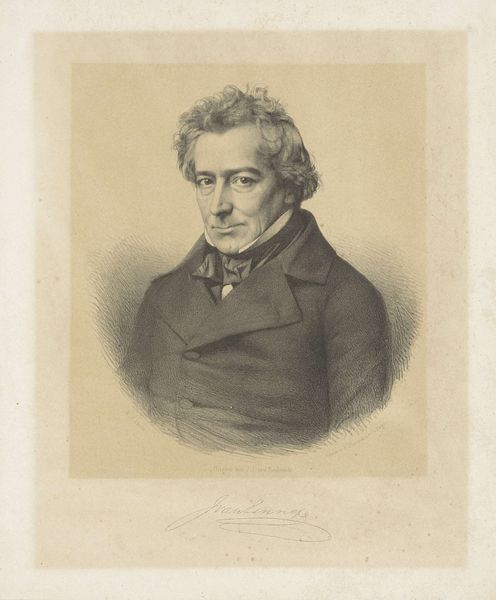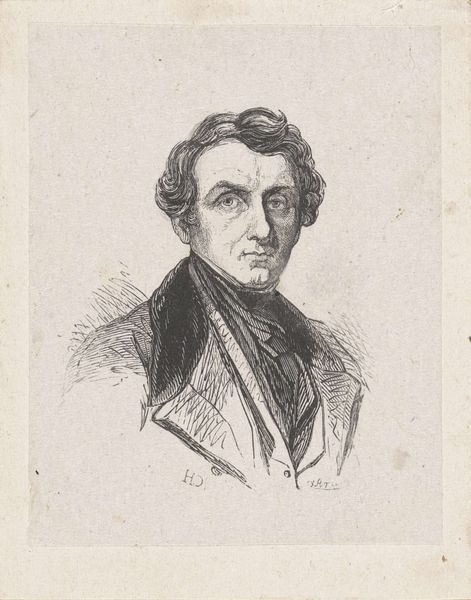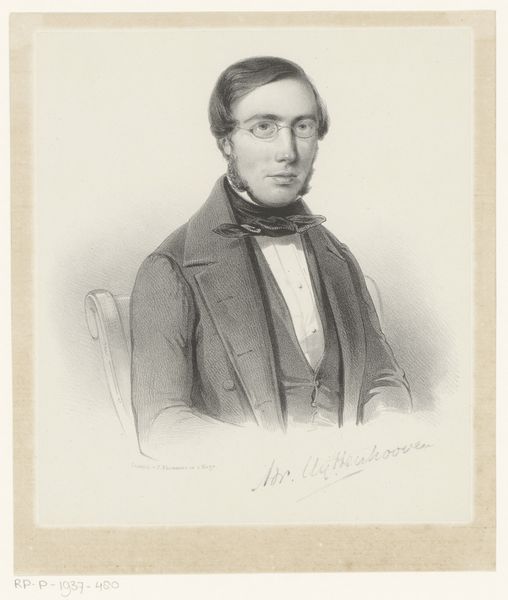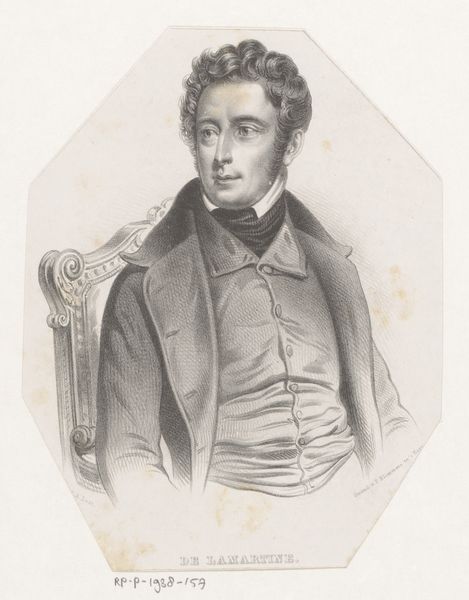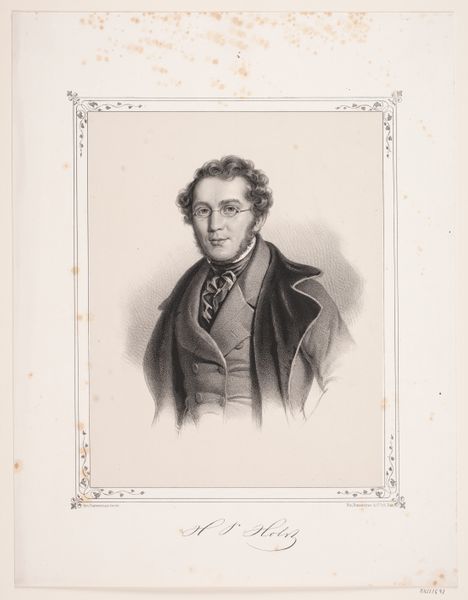
drawing, lithograph, print, graphite
#
portrait
#
drawing
#
lithograph
# print
#
caricature
#
romanticism
#
graphite
#
portrait drawing
#
portrait art
Dimensions: 176 mm (height) x 138 mm (width) (bladmaal)
Editor: This is a lithograph from 1840, a portrait of Hans Peter Holst. I am struck by how precise the lines are; I can only imagine how painstaking that must have been. What do you make of this, looking at the process and materials? Curator: This print provides a fascinating glimpse into 19th-century reproduction. The lithographic process, with its reliance on the chemical reaction between grease and water, allowed for relatively inexpensive reproduction, yet retained a handcrafted quality, due to its drawing elements. Consider the societal impact – making portraits like this more accessible. Editor: So, you're saying the *method* is significant? That making art affordable democratizes the medium itself? Curator: Precisely. This wasn't oil painting, which catered to a wealthier clientele. The artist, in choosing lithography, participates in a larger network of printmakers and consumers, influencing its meaning. Note also that graphite was a core element of preparing the lithographic stone: How did the availability of such material at the time impact the process? Editor: I hadn't considered the implications of graphite accessibility, either. Now that you mention it, the use of it directly implies a different type of "high" art as it blends drawing and print making. What was involved in quarrying and production of graphite during the 1840s? It all contributes to understanding access and value, doesn't it? Curator: Absolutely. Researching the historical trade routes, and production levels, may reveal who the portrait really speaks *for*, and to. This challenges the typical singular art historical narrative of “art for arts sake”. Editor: Fascinating! Thinking about the labor and materials behind even what seems like a straightforward portrait drawing adds such a rich layer of social understanding that would otherwise be easily missed. Curator: Exactly, and by doing so, the aesthetic result now incorporates so much more than what meets the eye, when only looking at "talent".
Comments
No comments
Be the first to comment and join the conversation on the ultimate creative platform.

